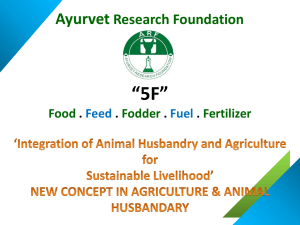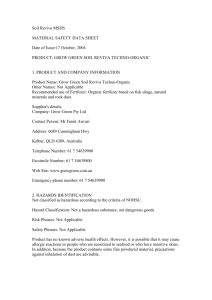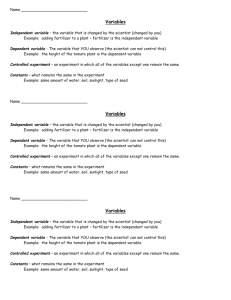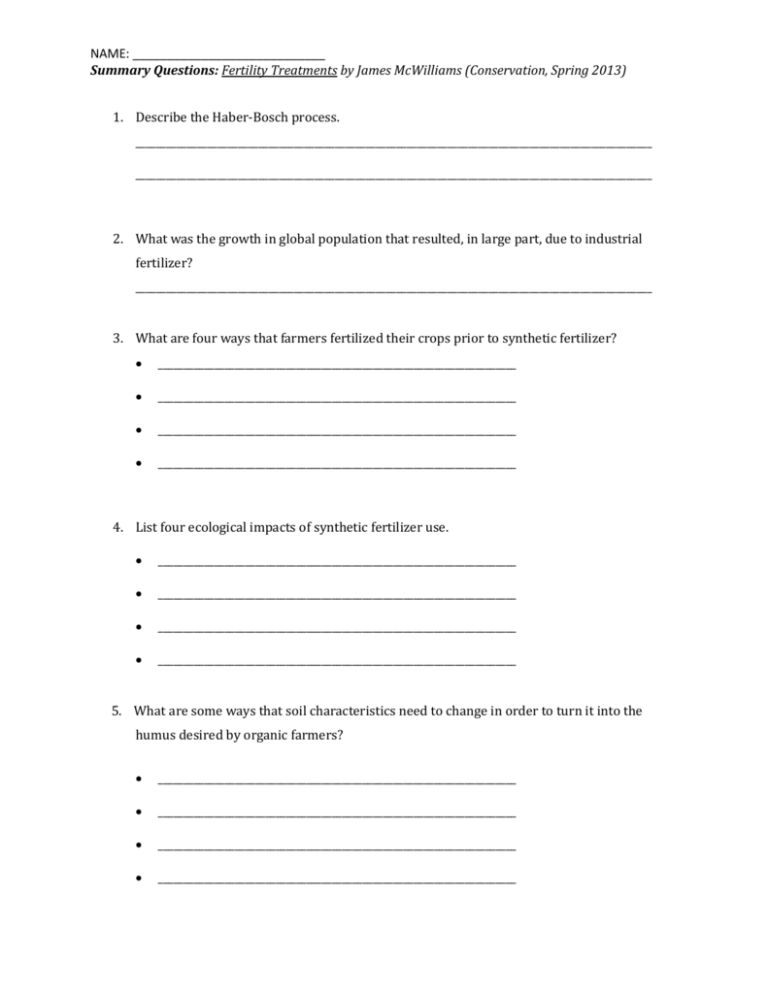
NAME: ____________________________
Summary Questions: Fertility Treatments by James McWilliams (Conservation, Spring 2013)
1. Describe the Haber-Bosch process.
_____________________________________________________________________________________________________
_____________________________________________________________________________________________________
2. What was the growth in global population that resulted, in large part, due to industrial
fertilizer?
_____________________________________________________________________________________________________
3. What are four ways that farmers fertilized their crops prior to synthetic fertilizer?
______________________________________________________________________
______________________________________________________________________
______________________________________________________________________
______________________________________________________________________
4. List four ecological impacts of synthetic fertilizer use.
______________________________________________________________________
______________________________________________________________________
______________________________________________________________________
______________________________________________________________________
5. What are some ways that soil characteristics need to change in order to turn it into the
humus desired by organic farmers?
______________________________________________________________________
______________________________________________________________________
______________________________________________________________________
______________________________________________________________________
Summary Questions: Fertility Treatments by James McWilliams (Conservation, Spring 2013)
6. What is the humus “microherd” comprised of and what does it do?
_____________________________________________________________________________________________________
_____________________________________________________________________________________________________
_____________________________________________________________________________________________________
7. List three drawbacks of all-organic farming.
_____________________________________________________________________________________________________
_____________________________________________________________________________________________________
_____________________________________________________________________________________________________
8. What are the “Four Rs” of fertilizer application?
_____________________________________
_____________________________________
_____________________________________
_____________________________________
9. What are three solutions proposed by the author to reduce the negative environmental
impact of fertilizer?
_____________________________________________________________________________________________________
_____________________________________________________________________________________________________
_____________________________________________________________________________________________________
Copyright 2013 by University of Washington Conservation Media Project. All rights reserved.
Summary Questions: Fertility Treatments by James McWilliams (Conservation, Spring 2013)
ANSWERS
1. turning nitrogen gas into a solid and pressurizing it into a solid that can be used as fertilizer
2. 1.6 billion to 6 billion in less than a century
3. animal manure (dung), silt from rivers, nitrogen-fixing legumes in crop rotation, and human
feces (“night-soil”)
4. loss of soil fertility, soil compaction, runoff creating hypoxic aquatic zones, use of natural gas,
creation of nitrous oxide greenhouse gas with is 300x more powerful than CO2, mining
operations
5. change the microbiology, return it from acidification and compaction, stabilize nutrient
richness, enhance water retention
6. Beneficial insects, worms, and microorganisms. They aerate soil and potentially reduce the
need for chemical pesticides.
7. yield is much lower, rate of nutrient delivery isn’t timed to plant need, runoff can include
excessive phosphorus, organic composting creates methane, and excessive application can
cause even more nitrous oxide than conventional farming
8. right time, right place, right source, and right rate
9. One: controlled-release fertilizers could reduce nitrous oxide emissions by 30% and runoff by
as much as 50%, Two: variable rate irrigation, Three: genetic breeding of plants for better
nitrogen absorption
Copyright 2013 by University of Washington Conservation Media Project. All rights reserved.

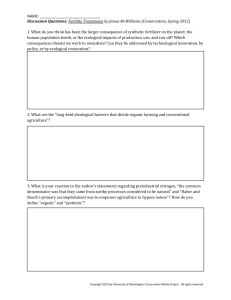
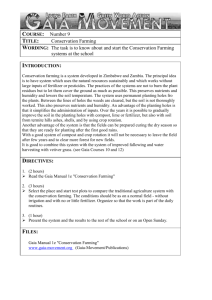
![Questions for (3.3.3) Externalities in agriculture [True or False?] The](http://s2.studylib.net/store/data/009995147_1-f1de64b535b6f4b8fe06925685d00ca4-300x300.png)



